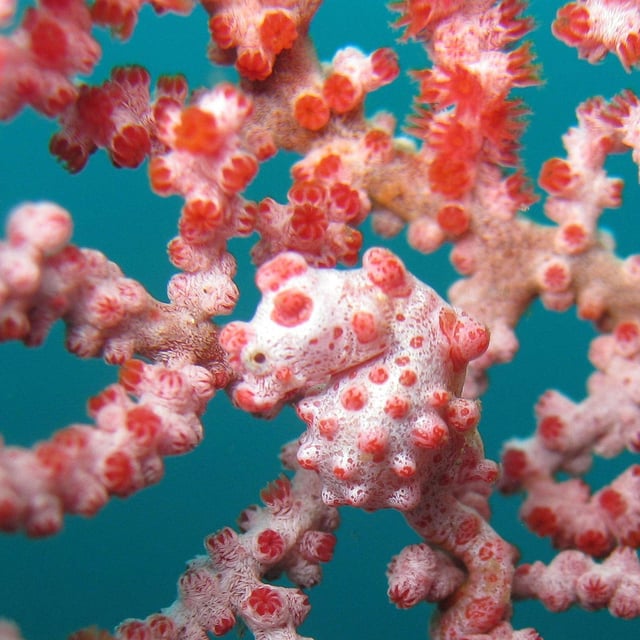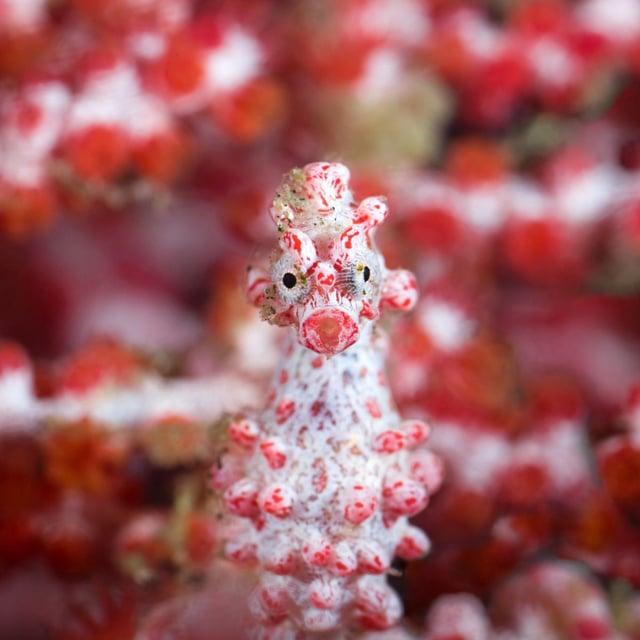Overview
- An international team reporting in PNAS links the pygmy seahorse’s extremely shortened snout and near-perfect mimicry to specific genetic changes, including loss of function in hoxa2b.
- The study finds adaptations that make the fish tolerant of coral toxins, while antimicrobial compounds from their hosts appear to have enabled the loss of multiple immune-system genes.
- Hippocampus bargibanti lives in close association with Muricella gorgonian corals, clinging by its tail and closely resembling the coral polyps.
- At roughly two centimetres long, the species ranks among the smallest vertebrates and inhabits Pacific regions of Southeast Asia and Oceania.
- Researchers warn that coral bleaching and ocean acidification threaten the host corals, with authorities recently reporting record bleaching around Australia.

